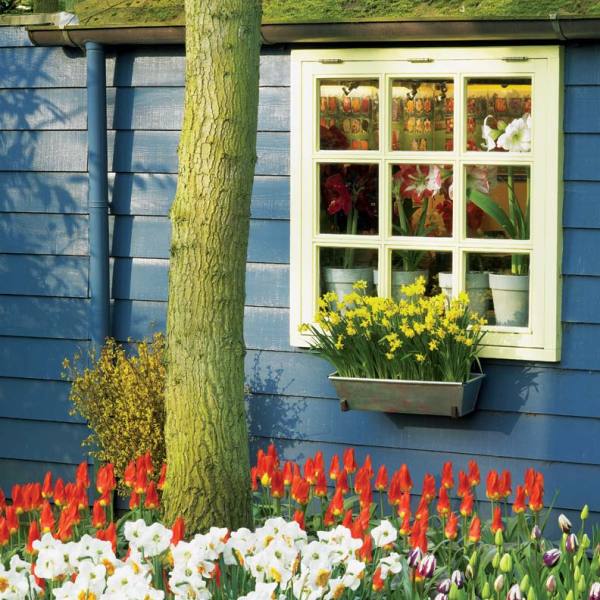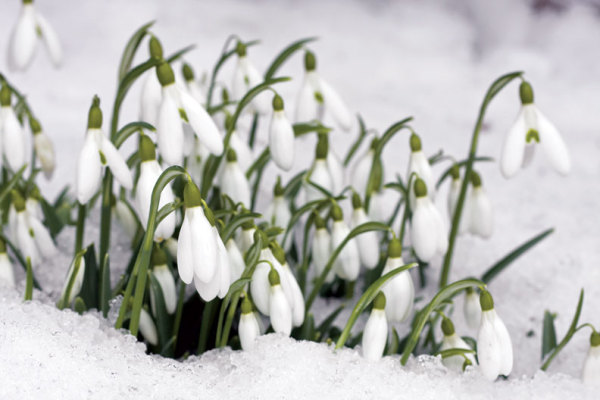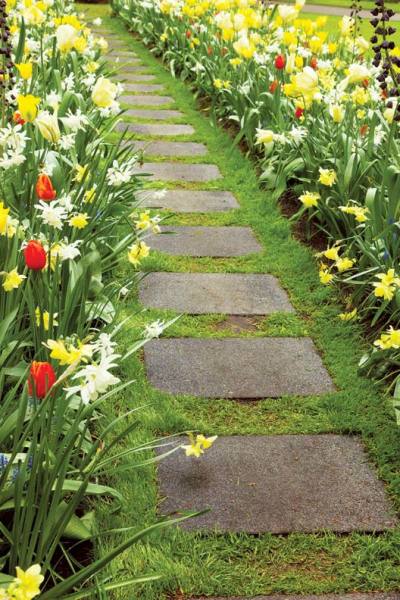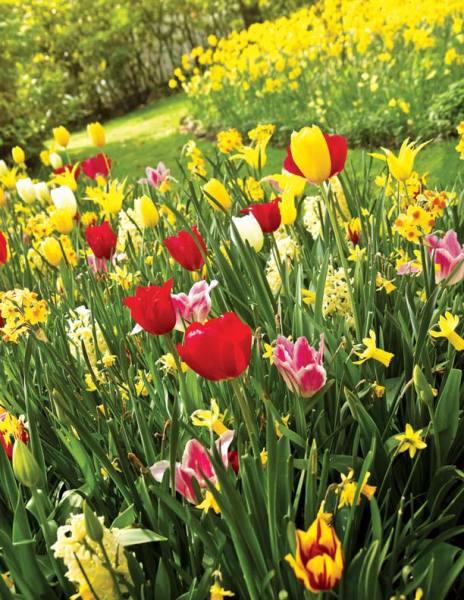
Planting bulbs outside your window or in a flower box will offer beautiful views when spring comes.
Phb.cz/Fotolia.com
The other day, one of our clients asked me to order some bulbs for her front yard. “Sure,” I said. “It’s certainly the time for it. What would you like?”
“Oh,” she replied, “25 of this daffodil and 25 of that, and 25 snowdrops, plus a few tulips.”
And this for a half-acre lot…
“Of course,” I answered. “I’ll order however many you like, but I would suggest a minimum of 75 each of the daffodils and no fewer than 250 snowdrops, for a start.”
Now some of you may be thinking, “Nice way to talk up sales, Michael!” But that certainly wasn’t my intent; in fact, if the client had insisted on buying such small quantities, I would have dissuaded her from buying any bulbs at all. For when gardening with bulbs, it’s all about the numbers.
The reason for this is twofold. First of all, the flowers of most of the early spring bulbs, like anemones, crocuses, and snowdrops, as well as my favorite of them all, chionodoxa, are tiny, so it takes great numbers to register any sort of impression of color, especially from a distance, which is precisely how you will be viewing most spring bulbs: from inside. Unlike summer gardens that you sit in and walk through, chances are high you’ll be viewing the plantings from inside the house during the fickle weather of spring. That means big color swathes are needed to register any sort of impact.

Snowdrops peek through the winter’s snow in anticipation of spring.
Bluestock/Fotolia.com
This leads to my second tip: Plant spring bulbs where you can easily appreciate them when you are indoors or where you often pass by—say, on the way to the garage or across the front of your house. While it’s entirely delightful to come upon a clump of daffodils waving gently in the breeze near the old potting shed, it’s far less enchanting if these particular daffodils are the only ones in the entire yard and require a long walk through a sodden landscape to view them.
Here in my garden, I have a very small bed along the upper terrace, which last year I planted with hyacinths mixed among very early tarda tulips and dwarf jonquils. This particular garden faces south with the house wall behind it, creating a warm micro-climate, and I was delighted to discover that the bulbs bloomed here a good two weeks before the same varieties planted elsewhere in the yard. And because they were right at my front door, I was able to appreciate the ethereal smell of the hyacinths every time I went in or out.

Tulips and daffodils create colorful borders for walkways.
Neirfy/Fotolia.com
Two other factors are also critical for a good bulb display: bulb quality and correct timing. The first is completely straightforward: Bulbs are graded by size, just like eggs, so the bigger they are, the better the flower size will be. While sometimes there are bargains to be had in buying smaller bulbs and waiting a bit for them to mature, generally try to buy the biggest bulbs you can afford.
The second factor, correct timing, is far trickier and requires some practice. The bulb display in my garden lasts almost four months, beginning with the very earliest snowdrops (which often appear in January, only to disappear harmlessly under a new snowfall a week later) and finishing with the late tulips in May. This extensive season provides both opportunities and problems, especially for the novice gardener. Tulip varieties, for instance, are notoriously hard to sequence. While technically divided into early, middle, and late, there’s much variation within these divisions and from variety to variety. If you’re not careful, you can wind up with some pretty ghastly color combinations.
Last year in my garden, for example, I had a very lovely apricot-salmon tulip open right next to a hot lipstick pink one. Fortunately the solution was simple: Get out the shears, and use one or the other for cut flowers. Still, better yet would have been to time the sequence correctly. If you don’t get it quite right every time, you can take some solace in the fact that even the pros like me don’t always get it right. (Don’t be fooled, either, by those tulip “collections” you see in the catalogs; these groupings are often determined by factors other than aesthetics, so make sure whatever you buy suits your taste and not someone else’s.)

A mixed color palette such as red, yellow, and white offers a dramatic look in the yard.
Colette/Fotolia.com
And finally, I don’t mean to be a doomsayer, but there’s no point buying bulbs that will be immediately consumed by hungry little critters. This isn’t much talked about in the bulb world, but it’s a huge problem. Voles, for instance, love tulips, and chipmunks absolutely delight in crocuses, as witnessed by the pockmarks in the bed each June where the little vandals have dug up and made off with each and every precious bulb.
There’s only one solution: Get rid of the diners, or close down the restaurant. I generally find it easier in the long run to plant what’s not continually on someone’s preferred menu. This will, of course, vary from place to place, but generally in areas where chipmunks and squirrels are prevalent, any member of the daffodil family is a safe bet; the entire genus is ignored by those critters.
Armed with these few tips, it’s time to get out those bulb catalogs and pore over those enticing descriptions. With a little homework (and a lot of digging), a fantastic bulb-filled garden will be yours next spring.







